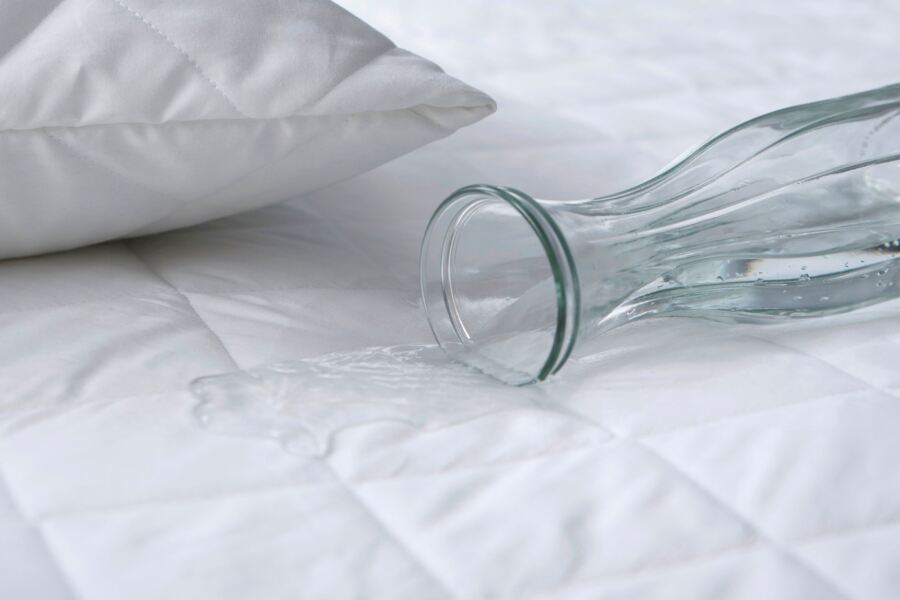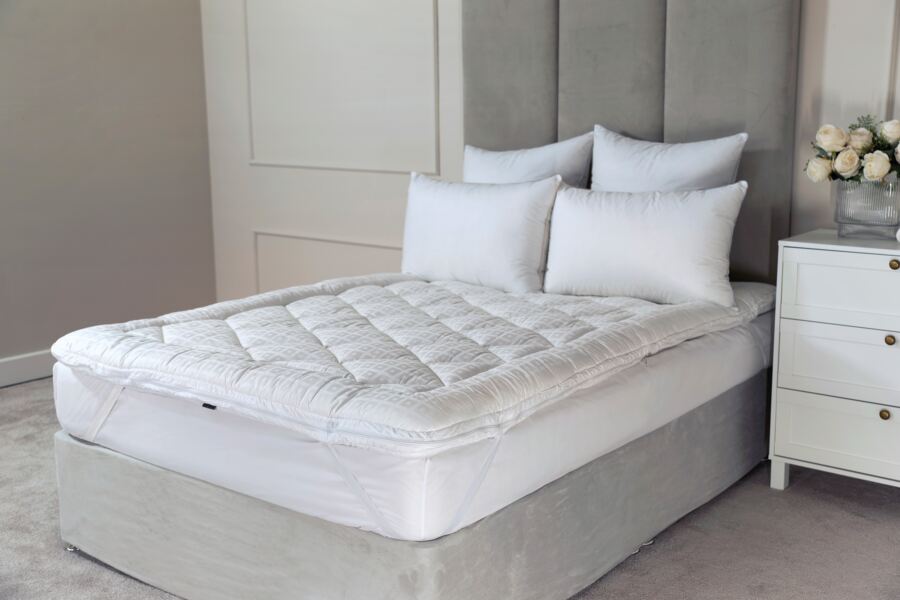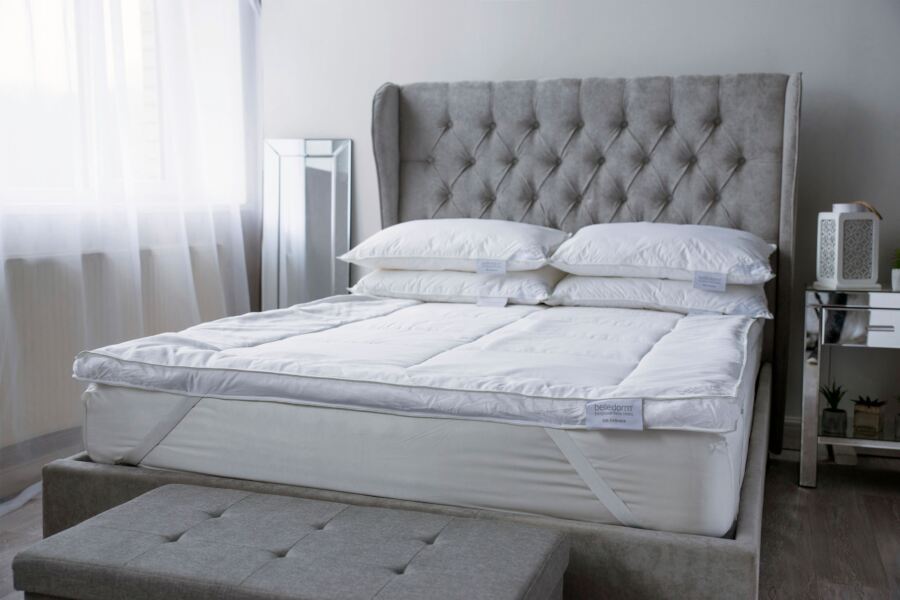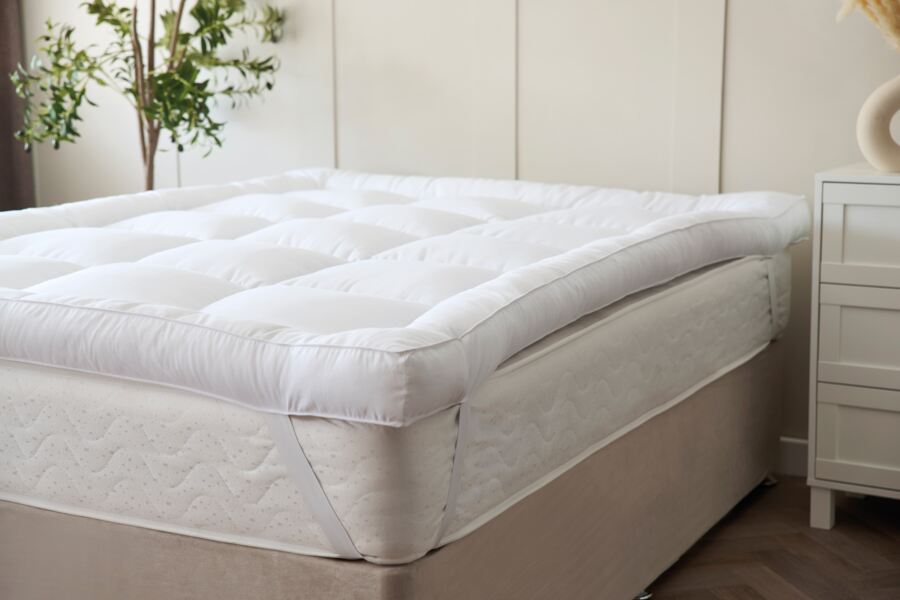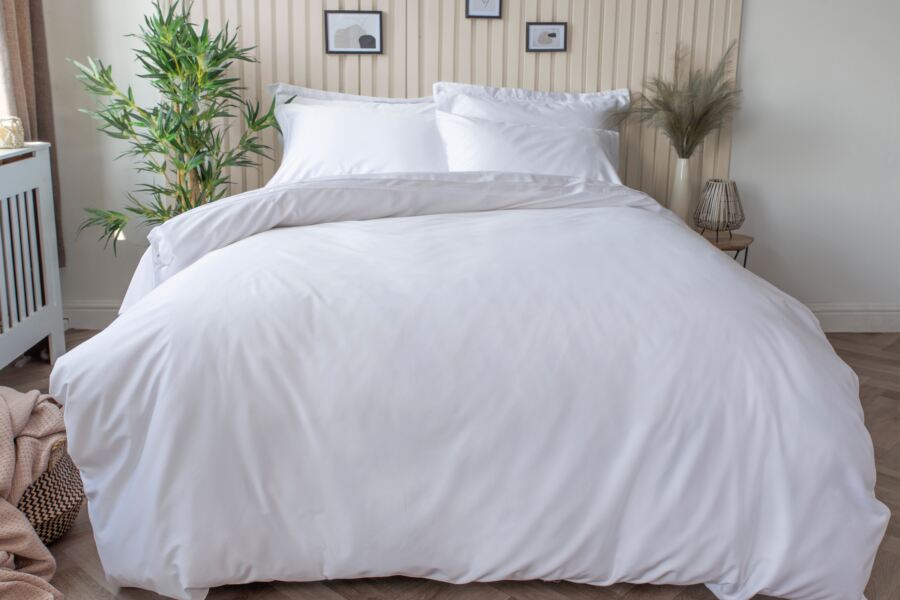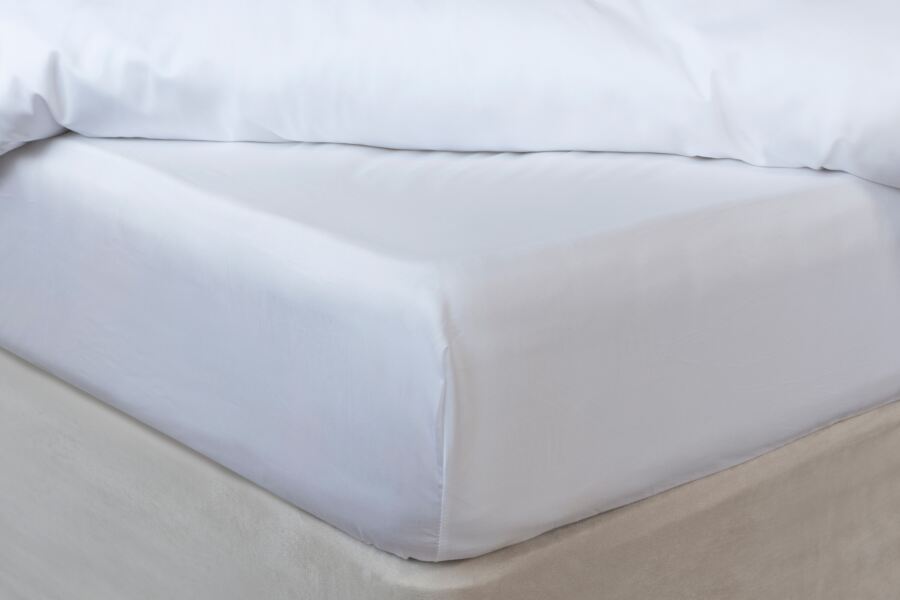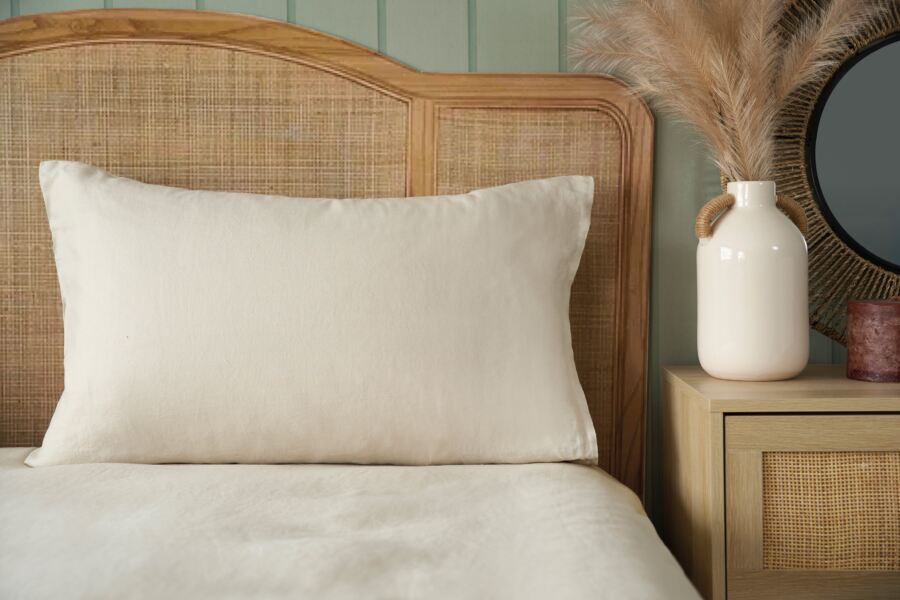Table of Contents
- #1: Use The Right Base to Support Your Mattress
- #2: Rotate Your Mattress Regularly
- #3: Use a Mattress Protector or Mattress Topper
- #4: Don't Let Your Pets Scratch Your Mattress
- #5: Clean Your Bedding Regularly
- #6: Air Your Mattress
- #7: Avoid Jumping on the Bed
- #8: Use the Right Bedding
- #9: Keep Food and Drinks Away from the Bed
- FAQs
#1: Use The Right Base to Support Your Mattress
Did you know that using the wrong base (or no base at all) can dramatically reduce the life of your mattress? This is because your bed frame does so much more than simply raise your mattress off the floor. It acts as a sturdy foundation that helps avoid uneven wear and sagging.
The right base will ensure proper airflow, support your weight, and prevent impact damage. The good news is that most manufacturers offer guidance on suitable bed frames for your mattress type.
Solid bases are popular for modern mattresses, while slatted frames work well if the slats are strong and spaced no more than 7 centimetres apart.
#2: Rotate Your Mattress Regularly
Over time, your body weight can create impressions and dents, especially if you tend to sleep in the same spot. Regular rotation is one of the simplest ways to prevent uneven wear and prolong the life of your mattress.
Most experts recommend rotating your mattress 180 degrees every three to six months to encourage even usage. Just make sure to set a calendar reminder to stay consistent, as it’s easy to forget this task.
Even if your mattress is marketed as a "no-flip" design, rotation is still important. This is especially true for single-sleeper beds or couples with a significant weight difference.
#3: Use a Mattress Protector or Mattress Topper
Investing in a mattress protector or topper can potentially add years to the lifespan of your mattress. These extra layers act as a barrier against spills, sweat, dust mites, and allergens, all of which can break down materials and impact hygiene.
Mattress protectors
Fitted mattress protectors are easy to use and come in a range of waterproof, breathable, and hypoallergenic options. They sit snugly over the top and sides of your mattress, much like a fitted sheet, making them ideal for everyday use. Look for machine-washable options designed to maintain airflow so you don't overheat during your sleep.
Mattress toppers
Mattress toppers are slightly thicker than protectors, providing you with elevated comfort and a better night's sleep. They come in plenty of different variations, including waterproof options, which are ideal for toddlers in potty training.
#4: Don't Let Your Pets Scratch Your Mattress
Pets are our cherished companions, but their scratching or digging can puncture the mattress's fabric and inner layers, potentially leading to sagging and torn seams. Pets also shed hair, which can lead to allergen buildup and the degradation of surface materials.
The best solution is to get your fluffy friends their own bed. Not only will your mattress thank you, but your sleep quality may improve too. However, if you do decide to let your pets on the bed, consider using a protective cover, like a mattress topper or a designated pet blanket.
#5: Clean Your Bedding Regularly
Clean bedding does more than just offer a fresh, crisp feel. It also protects your mattress from the gradual build-up of sweat, body oils, dust mites, dead skin cells, and bacteria that can seep into the mattress layers and speed up the deterioration process.
Following the manufacturer's guidelines, wash your bed sheets, pillowcases, and protectors at least once a week to remove allergens and keep everything hygienic.
If you use a duvet cover or comforter, wash these items regularly, too. Staying on top of your bedding routine can make a noticeable difference in the cleanliness and lifespan of your mattress, and you may also notice an improvement in your skin health and allergy symptoms.
#6: Air Your Mattress
One of the best things you can do for your mattress is to air it outside.
Regularly airing your mattress will reduce the build-up of mould, mildew, and unpleasant odours. These issues are especially common for those living in hot, humid, or enclosed environments. Exposing your mattress to fresh air minimises these risks and can extend its lifespan.
You don't need to carry your mattress outside to air it. You can simply strip the bedding and open a nearby window to encourage airflow. However, you should also try to get it into direct sunlight as UV rays are known to kill bacteria and deodorise fabric.
To make the most of these natural benefits, aim to air it weekly for a few hours, flipping it to expose both sides.
#7: Avoid Jumping on the Bed
It may sound painfully obvious, but jumping on a used or brand-new mattress is one of the fastest ways to ruin it, as it’s not built to withstand such force. This can lead to bent springs, damaged foam, broken bases, and other issues.
If you have kids, encourage them to see their beds as a place for rest and not for playing. And if you notice creaking or soft spots after rough use, check your mattress for damage immediately.
#8: Use the Right Bedding
Your choice of bedding can also make your mattress last longer.
Breathable, moisture-wicking bed sheets and duvets help regulate temperature and reduce sweat build-up. On the other hand, low-quality or overly thick bedding can trap moisture and restrict airflow, contributing to mould, bacteria build-up, and general wear.
When it comes to bed linen, opt for natural fabrics like cotton or bamboo that are kind to your skin and mattress. For a better night's rest, switch to lighter linens in summer and warmer layers in winter to suit the changing weather and sleep requirements.
#9: Keep Food and Drinks Away from the Bed
It might be tempting to enjoy breakfast in bed or a midnight snack while watching a movie, but eating and drinking on your mattress increases the risk of spills, stains, and crumbs.
Liquids can seep into the layers and cause long-term damage or unpleasant odours. This can lead to bacteria build-up and even attract pests, like ants and cockroaches.
If you do occasionally snack in bed, make sure to use a tray and waterproof protector, and clean up immediately after. But ideally, keep the bed reserved for rest, not for eating.
FAQs
How long should a mattress usually last?
Most mattresses last anywhere between 7 and 10 years. However, a good quality mattress will last longer than one made from subpar materials. How you look after your mattress will also affect its lifespan.
Can you revive an old mattress?
Adding a high-quality mattress topper can help make an old, soft mattress feel firmer. However, it's better to care for your mattress throughout its life than try to revive it towards the end.
Why do mattresses wear out so fast?
Some factors that cause mattresses to wear out include body weight, sleeping positions, and the accumulation of dust mites and dead skin cells. Humidity and temperature may also play a role in the degradation of your mattress.
What types of mattresses last the longest?
Latex mattresses, made from natural latex, are known to last as long as 25 years. Memory foam mattresses are also praised for their durability and longevity. Investing in a high-quality new mattress from the get-go is well worth it, as it will stand the test of time.
What types of mattresses wear out the fastest?
Innerspring mattresses typically wear out faster, especially those with low coil counts. Soft mattresses also tend to experience more wear and tear when compared to firm mattresses. In addition to their longevity, firm mattresses are usually preferred as they offer a supportive feel.



